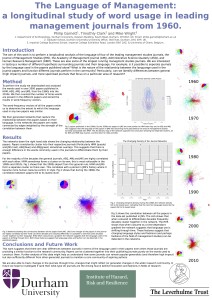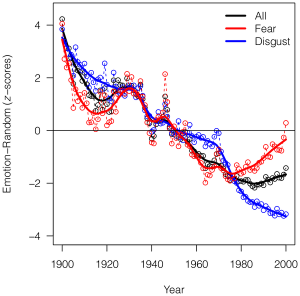This was an interesting paper that I contributed a section too. It was a look back, and in a sense, a look forwards at four leading management studies journals, ASQ, JMR, JMS and HRM. My involvement was to look at the changing content of the journals in terms of the frequencies of the words being used. Even just looking at the words we were able to separate papers to their publishing journal, and when displayed as a network of correlations papers tended to cluster into journals. This is interesting as it does indicate that journals do have a house style that people inevitably conform to. The causality of how this happens is not clear, it could either be that journals influence how people write, or that people writing about similar things just tend to use similar words and then publish in a sub-set of journals. Further more we where able to look at the changing word use in a single journal through time. Again we were able to see that papers published in different periods of time tended to be most closely related to each other. The full paper is available online, and there is a poster looking at the data also linked below.

I intend to pick this work up again in the near future.
